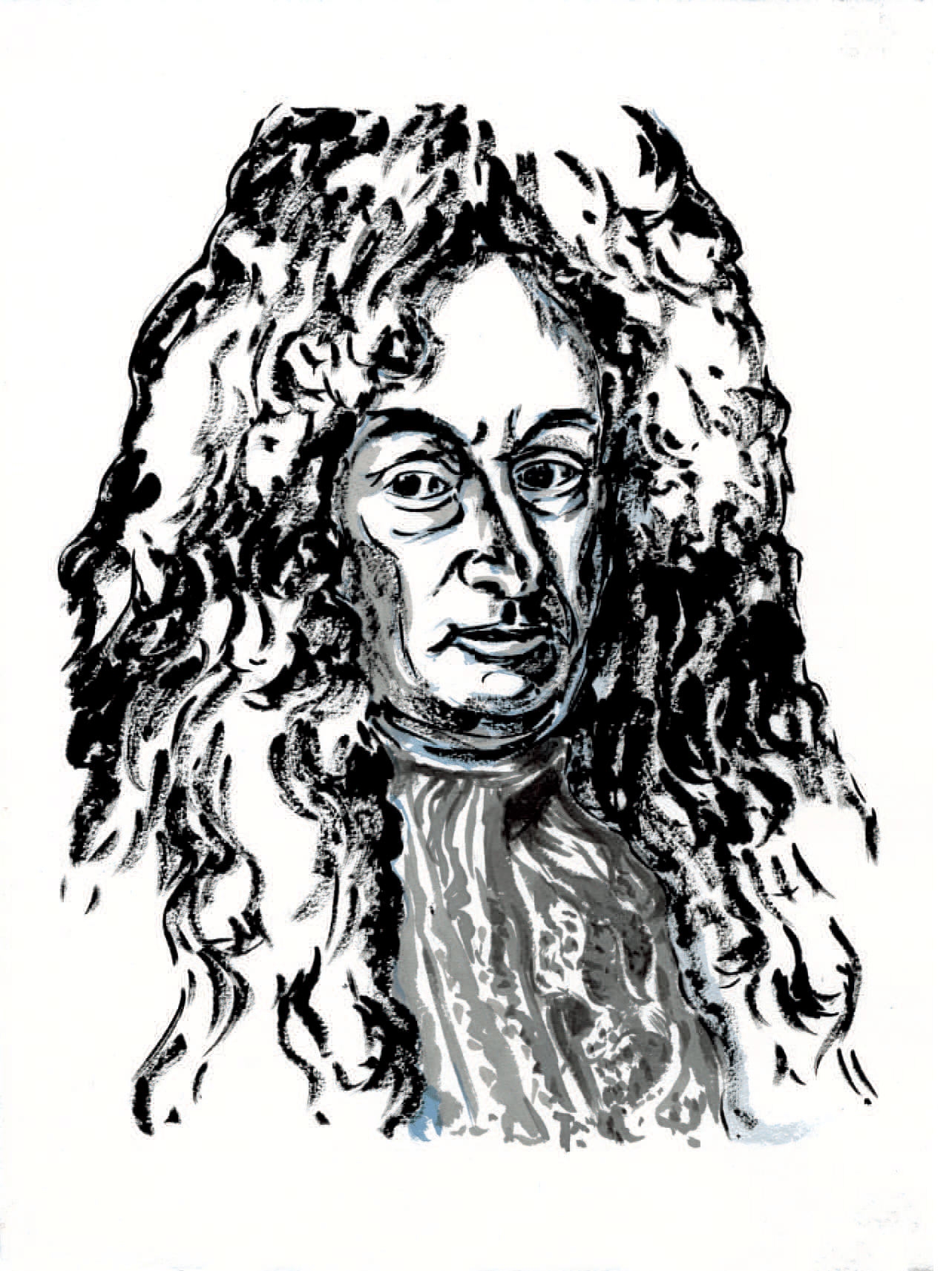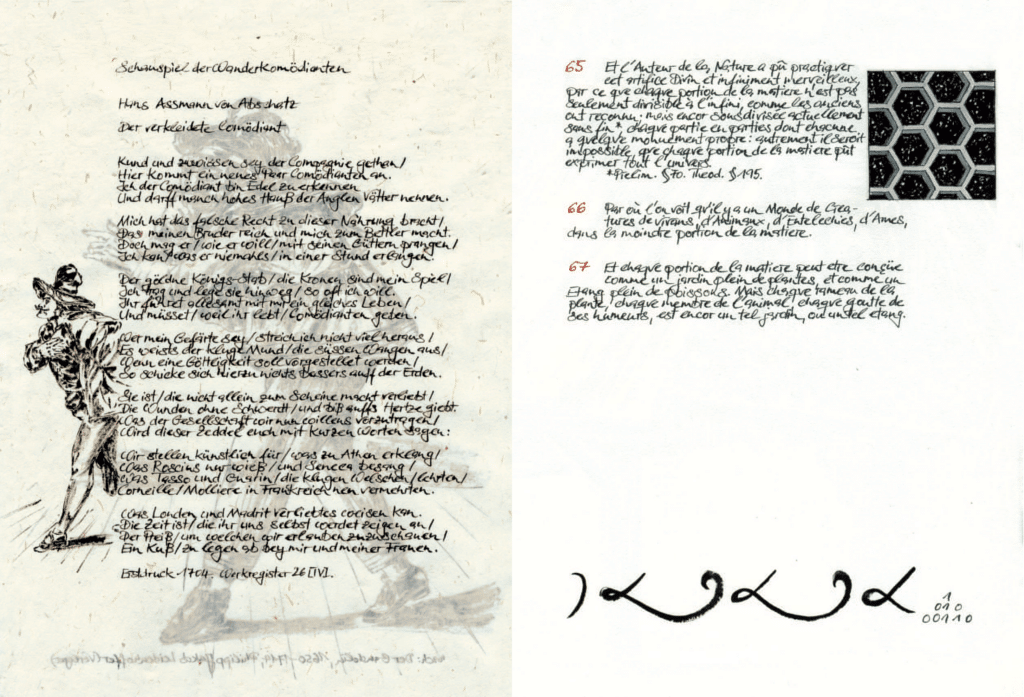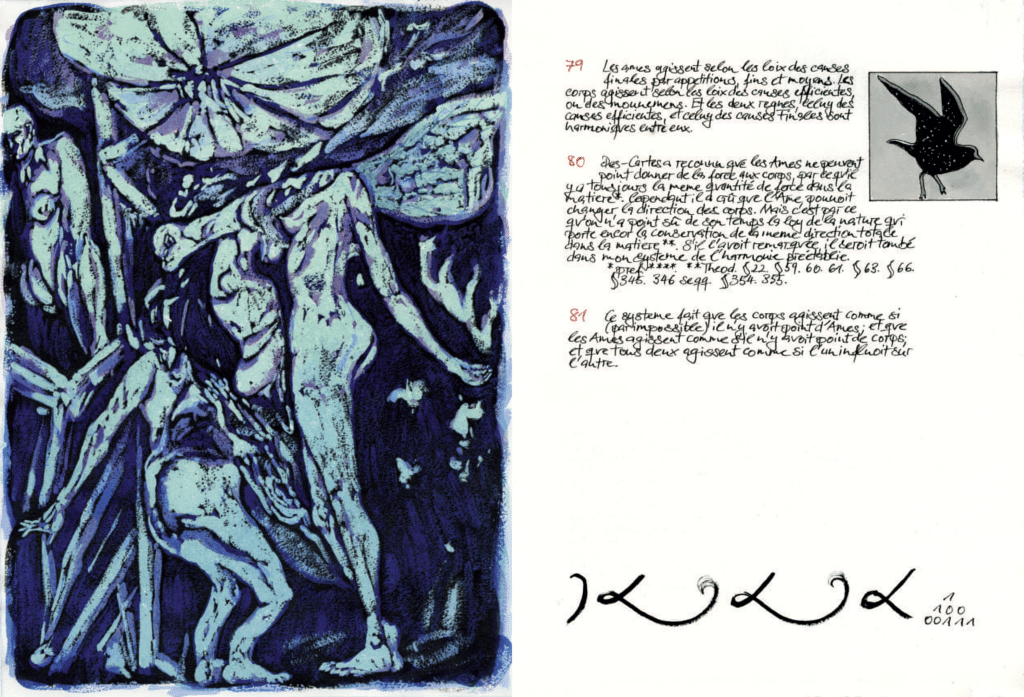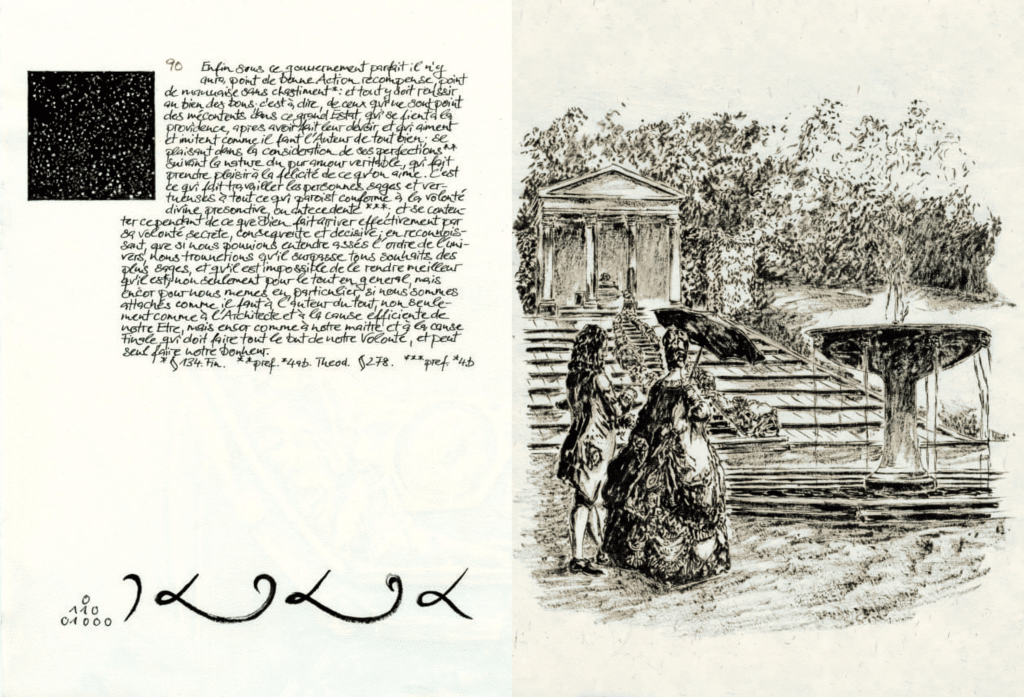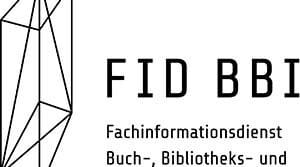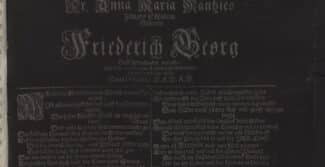16 February 2024
Kai Pfankuch’s unique aesthetics are a characteristic feature of this 144-page work, which focuses on such topics as movement, anatomy, medicine, machines, mathematics, combinatorics, infinity, symbols, spectacle, curiosity, alchemy, mysticism, people, nature and dominion. These themes are linked together and accompanied throughout by the French text of Gottfried Wilhelm Leibniz’s Monadology, which divides the world up into individual entities. The profundity of the content the artist has compiled in Theatrum mundi and of the motifs he presents there only reveal themselves upon closer examination. We had a good look at the work – and followed this up with a few questions:
HAB: How did you come up with the idea for the book, and when did you first come into contact with Leibniz?
Kai Pfankuch: A friend asked me to read his academic paper focusing on the concept of nature in philosophy from antiquity to the present. This sparked my interest in this topic as the subject for a new artist’s book. He omitted the Baroque era, which made me curious about the associated ideas from this epoch. In Leibniz’s monadology I discovered a clearly defined and, for its time, progressive concept of nature. I was so fascinated by Leibniz, whom I had previously viewed as a mathematician rather than a philosopher, that I decided to use him as a starting point. Subsequent research brought me to Wolfenbüttel, where I was able to put together a wealth of material.
HAB: What aspect of your extensive research of the 17th century surprised you the most?
Kai Pfankuch: I was especially surprised by the tremendous diversity of scientific and technical knowledge that existed during the Baroque era, an era that I had previously associated more with exuberant decor. Looking into the fields of medicine and anatomy, I was fascinated by the almost manic obsession with which scholars sought to figure out the secret of life, the relationship between body and spirit and the unfathomable concept of the soul. Leibniz was one of the first to attribute souls to animals, even the smallest of them, such as the fly, which he saw as an example of nature’s infinite complexity. The concept of infinity, both mathematically and philosophically, is a major focus of my Leibniz book. I was also intrigued by the Baroque books on machines by Besson, de Caus, Ramelli and Leupold – engineers I hadn’t known about before – which were an important source of inspiration for my artist’s book. My attempts to uncover and include further advances and analogies to the individual Baroque themes in subsequent periods were also very exciting. The book ends with a symbolic portrayal of digital dominion: Leibniz’s introduction of the binary system and infinitesimal calculus also represented a significant contribution to this.
HAB: The concept of the cabinet of curiosities served as the foundation for your book. Could you say a little more about this? You also describe the allegorical approach as a fundamental part of the book. Could you explain?
Kai Pfankuch: Such a profuse collection of material requires coherent and concise organisation that goes well beyond simply stringing the material together. In this instance, Leibniz’s concept of a museum, or what he described as a cabinet of curiosities of art and nature, provided a leitmotif that could bookend the material. This museum was intended to demonstrate the notion of a pre-established harmony and communicate knowledge. In this regard, the book resembles a tour through a museum. The allegory is not just a personification of abstract concepts, it also represents the generation of meaning through a particular combination of symbols and things that are referential in nature: this generative process is attendant upon a concealed text. The allegory is thus a patchwork whose significance cannot be assigned to the individual components. In my books I proceed in much the same way with the intention, ideally, of opening up new perspectives via the specific combination of materials. Furthermore, I add allegorical drawings to the mix, such as the one of a hand grabbing at a passing bird through a closed window, a symbol of the Baroque anatomists’ and physicians’ obsessive search for the seat of life.
HAB: The book contains 144 pages consisting of twelve sections, each of which is dedicated to different concepts and themes. What determined the book’s architecture – the formal structure or the content? What is your approach when it comes to selecting materials and arranging them?
Kai Pfankuch: The arrangement of the various topics and concepts follows their internal relationships with one another. The book develops an associative sequence focused on specific areas, beginning with movement – a key focus of philosophical interest in the Baroque – which is broken down in terms of its content. To some extent, each of these domains is already contained in its predecessor. The transitions are fluid – there are no hard breaks.
The selection of individually assigned material is essentially geared to creating an atmospheric image of the particular theme that is as dense and compact as possible.
HAB: One small, yet very noticeable feature of this book are the vignettes showing cut-out views of the star-spangled sky. What do they represent? The binary system also plays a significant role – both for Leibniz and for you. You even use this system for the page numbers. Could you tell us more about that?
Kai Pfankuch: The vignettes are influenced by the concept of ‘entelechy’, a synonym for monads of divine origin from which everything originates. This comes up again and again in The Monadology. Entelechy is the form that is realised in the material world. In these vignettes, the view of the starry sky as an allegory of a universal principle opens up through details and snippets of living forms. Wherever possible, the motifs refer directly to the accompanying text by Leibniz.
As Leibniz was the one who introduced the binary system, it made sense to use it for the page numbers. As an allusion to the divinity that is often emphasised in monadology, I wrote the zeros and ones in a triangular form rather than a line.
HAB: You say that humans represent an empty space in the digital world. Could you explain that in greater detail? What does this have to do with Leibniz’s writings? Do you believe these texts can offer modern society important intellectual stimulus?
Kai Pfankuch: This proposition is a preliminary expression of cultural anxiety vis-à-vis the evolution of intelligent but ‘dead’ machines. Their soulless existence is based on countless self-generating computer algorithms. Highly developed artificial intelligence is an emerging system and the results of this cannot be predicted with any certainty. This gives rise to the paradox of a loss of control inherent in humanity’s desire to use machines to exert total control.
Leibniz’s concept of a pre-established harmony [of a predetermined monad] – which, given all the evil in the world, was mocked by Voltaire in his Candide – does, however, offer new intellectual stimulus in our current era, with its destructive approach to natural resources. It is also important that we understand how all living beings are connected to one another so that we do not irrevocably disrupt nature’s delicate regulatory system.
Title image: Double page 2 from Theatrum mundi: Leibniz’ Geister by Kai Pfankuch
PURL: http://diglib.hab.de/?link=181
Alexandra Serjogin
Serjogin served as deputy press secretary at the Herzog August Bibliothek up to and including 2023, when, together with Sarah Janke and Prof. Peter Burschel, she published Der Rote Faden (A Common Thread), a book about the HAB’s artist’s books.
Personal details